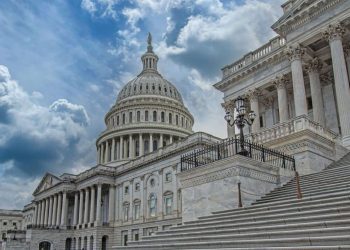State housing leaders recently gathered during a webinar titled, “Unpacking Housing Policy Reforms in California, Arizona and Nevada” to discuss how policy changes have impacted their respective housing landscapes.
The three panelists—Kirin Goff, executive director, Arizona Neighborhood Project; Michael Lane, state policy director, SPUR in California; and Maurice Page, executive director, Nevada Housing Coalition—shared distinct paths toward increasing housing supply and tackling affordability while underscoring urgency to achieve both.
The discussion, hosted by FHLBank San Francisco and the Terner Center for Housing Innovation, was moderated by David A. Garcia of Up for Growth.
Nevada: Momentum through investment and deregulation
Page said that in 2025 so far, over 60 housing-related bills were introduced and 26 passed. He called it a “huge win” and a sign of growing political will.
He highlighted three major pieces of legislation:
- Assembly Bill 540, or the “Nevada Housing Attainability Act,” which includes a $133 million fund to support mixed-income housing and workforce development
- Assembly Bill 366, which created a permanent supportive housing development fund now backed by $21 million annually
- Senate Bill 241, or the “Buy Right” multifamily zoning bill, which overrides local ordinances to allow higher-density housing on commercially zoned land
“Ten years ago, we had just three to five housing bills in front of the legislature. This year, we had over 60,” said Page, pointing to the state’s rapid growth and housing demand.
Arizona: Flexibility and cutting through red tape
Goff outlined major zoning reforms passed in 2024 and 2025. These included laws legalizing two accessory dwelling units (ADUs) on single-family lots statewide and a middle housing bill permitting up to fourplexes near urban centers. In 2025, these efforts expanded into unincorporated county land.
“It just unlocks a lot of potential land and a lot of potential existing building space that can be converted to new homes,” Goff said, highlighting the state’s growing embrace of ADUs. She also discussed a starter home bill, which sought to eliminate restrictive lot size and design regulations. Although vetoed, its ideas have influenced Texas legislation.
California: Seizing momentum through long-term reform
Lane celebrated the recent passage of AB 130, a budget trailer bill that significantly reforms CEQA (the California Environmental Quality Act), which he described as long-overdue for streamlining, by-right housing approvals.
“It’s historic,” Lane said, praising Governor Newsom and legislative champions for pushing through what had taken nearly a decade of advocacy. He also pointed to reforms such as eliminating parking minimums near transit, introducing shot clocks for permitting and bolstering enforcement through the state’s Housing Accountability Unit and Attorney General’s office.
However, Lane warned of continued challenges around development impact fees and inclusionary zoning requirements, which can undercut housing feasibility.
Laying the groundwork for nationwide reform
Though each state has approached housing differently, the panelists agreed that one state’s innovation can quickly become another’s blueprint.
For example, Morice credited California’s work on ADUs as a major inspiration, introducing her to “middle housing.”
“It was actually AARP California’s YouTube series that introduced me to the concept,” she said. Her team studied California’s ADU laws closely, crafting legislation to block common local government workarounds. “We wrote our bill to say cities can’t do things like require fire sprinklers or additional parking—lessons learned directly from what happened in California.”
Morice also emphasized implementation, pointing to California’s Casita Coalition as a model for ensuring that legislation results in actual units being built.
“After reforms, nearly a quarter of new homes in LA were ADUs—that’s scalable,” she noted.
Page took cues from California as well, citing transferable tax credits and by-right zoning policies. Since 2019, Nevada has added 1,500–2,000 units using creative financing tools, with plans to build another 3,400 by 2026, aided by federal funds.
“We had to be very creative. We don’t have state income tax, so financing housing means leveraging what we have,” said Page.
Both speakers stressed that their states’ respective political landscapes required custom approaches.
“Our politics are very different from California’s,” Morice explained. “We’re a purple state, so we had a really wonderful bipartisan coalition—really wonderful legislative champions on both sides of the aisle who care deeply about the issue.”
On financing, California’s Lane described a suite of state-level responses to rising costs, including a 100% density bonus for multifamily housing and a $500 million annual low-income housing tax credit. Lane also spotlighted a creative proposal (SB 750) to provide loan guarantees for housing projects via CalHFA.
With federal housing funding under threat, all speakers underscored the urgency of state action.
“If we’re going to demonstrate blue-state values, then we need to be able to make those investments I think at the local and state levels, even when we may be somewhat abandoned at the federal level,” said Lane.
Meanwhile, Nevada’s Page warned that cuts to Medicaid and SNAP would force the state to divert funding away from housing to put funds into the benefits.
Looking ahead, each state is preparing for new policy pushes: California is exploring affordable homeownership models; Nevada is prioritizing housing preservation; and Morice hinted at a new focus on reducing permitting burdens, noting from personal experience that building an ADU can be an “onerous” process.
Ultimately, any blueprint for successful housing reform will have three things in common: it depends on thoughtful local adaptation, sustained implementation and creative problem-solving across all levels of government.











